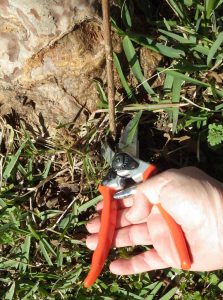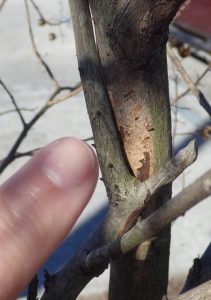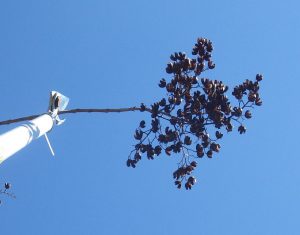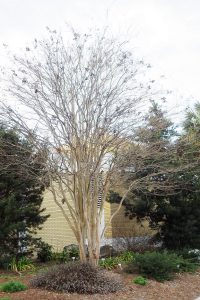It is that time of year when folks start thinking about pruning their Crapemyrtle trees. The winter time is the perfect time to prune these popular flowering trees. Unfortunately, for many folks that involves topping the tree. Southern Living magazine coined the term “Crape Murder” to refer to the severe removal of large branches out of the tops of the trees. Topping requires less skill and time than other pruning methods, but it also results in delayed flowering, weak growth and unattractive sprouting. Not only is topping crapemyrtles ugly, it increases maintenance requirements on an otherwise low-maintenance tree.
There is a technique called pollarding where the new growth is pruned at the same place each year. There are large old trees in Europe that are pollarded every year. In the winter time the cut branches have large knots where the sprouts are cut back to every year. Crapemyrtle trees that are pollarded look very interesting. The difference between pollarding and “crape murder” is all in the technique. A topping cut wound is large because it removes the whole branch, whereas pollarding only removes the new sprouts that have formed the year prior.
In the past, it was true that you pruned crapemyrtles to reduce powdery mildew infestations. With today’s resistant cultivars, crapemyrtles require very little pruning. In fact, a crapemyrtle planted in full sun with plenty of space to grow needs little to no pruning at all. If you find yourself in the position to prune crapemyrtles, here are a few simple steps to follow.

First,
Prune sucker sprouts and basal sprouts. If left to grow, these sprouts may form woody stems that eventually compete with existing main stems.

Second,
Prune any rubbing or crossing branches, as well as dead branches. This may include branches that are crossing through the canopy from one side to another. As always make the pruning cuts at the branch collar.

Third, (this one is optional)
Tip prune the branches to remove spent flower buds. This is also called pencil pruning because the branches removed are no thicker than a pencil. This type of pruning is the most labor intensive, but it also results in a more aesthetically attractive tree.

Recent research from the University of Florida has demonstrated that the number of crapemyrtle blooms decrease in direct correlation to the size of the branch removed. In other words, the larger the branch removed, the fewer the blooms. However, blooms on pruned trees were larger than blooms on un-pruned trees. To receive the benefit of larger flowers from pruning, prune just pencil sized branches without jeopardizing overall tree health caused by topping the tree. For more information refer to: http://edis.ifas.ufl.edu/pdffiles/EP/EP39900.pdf.
 0
0
